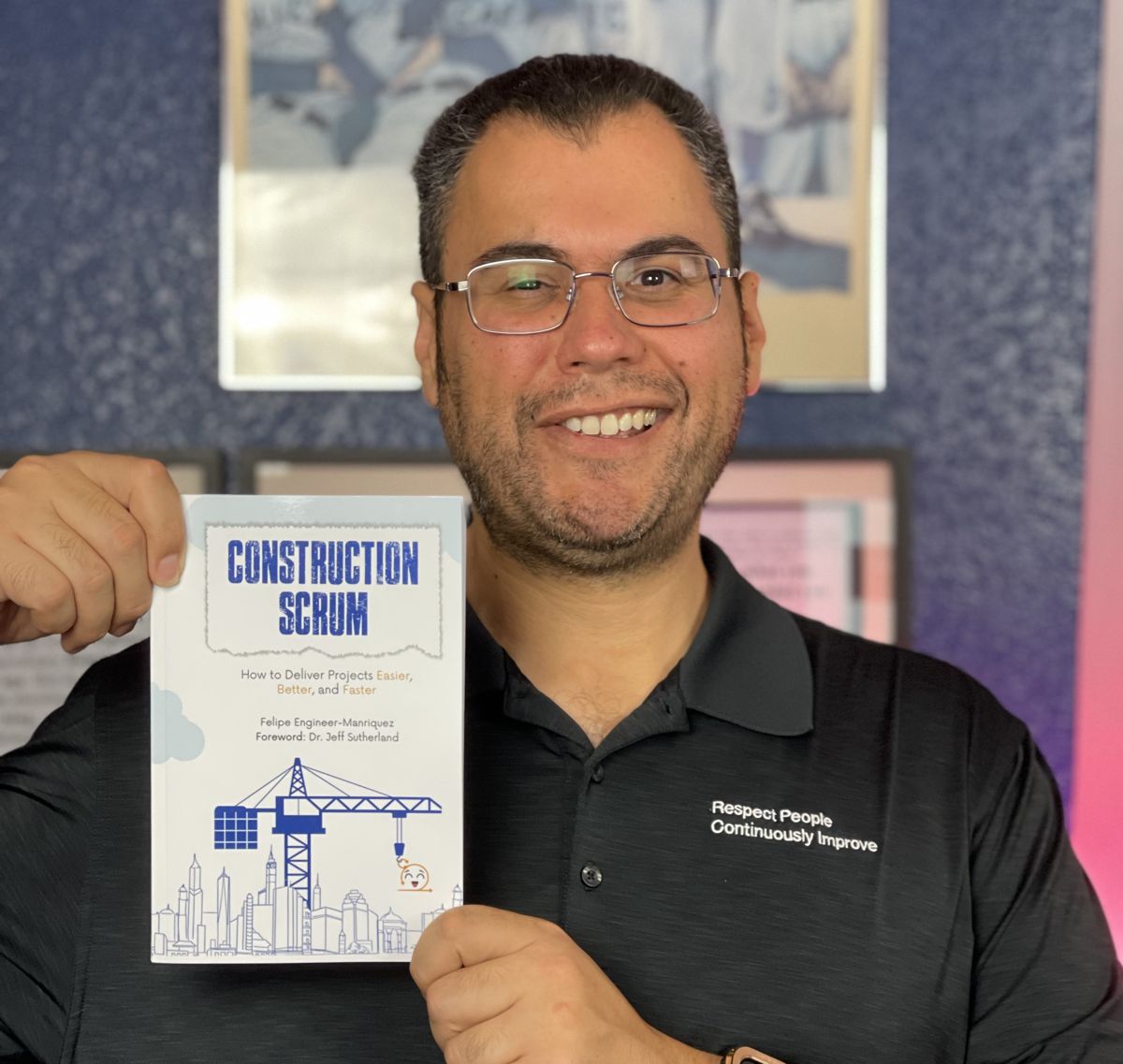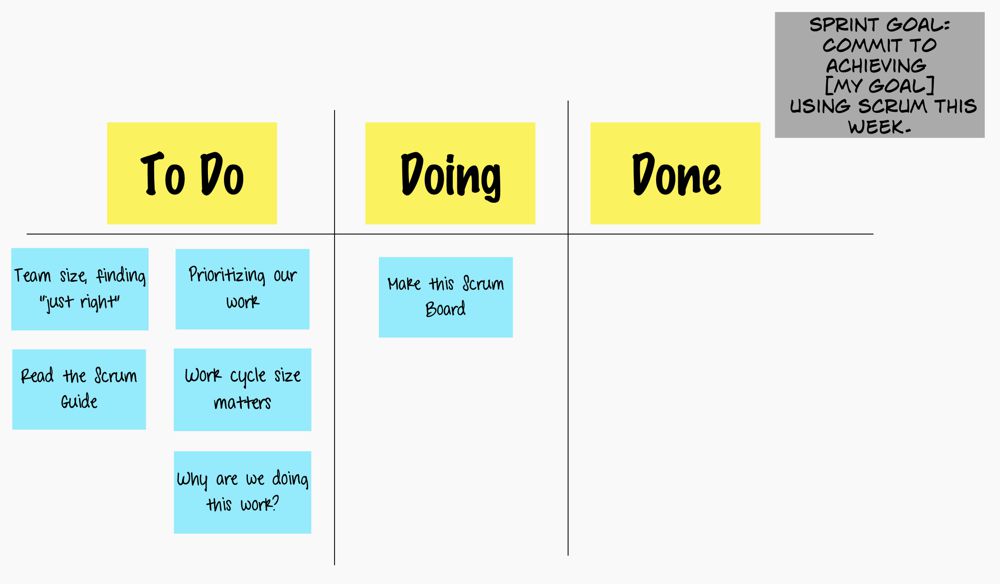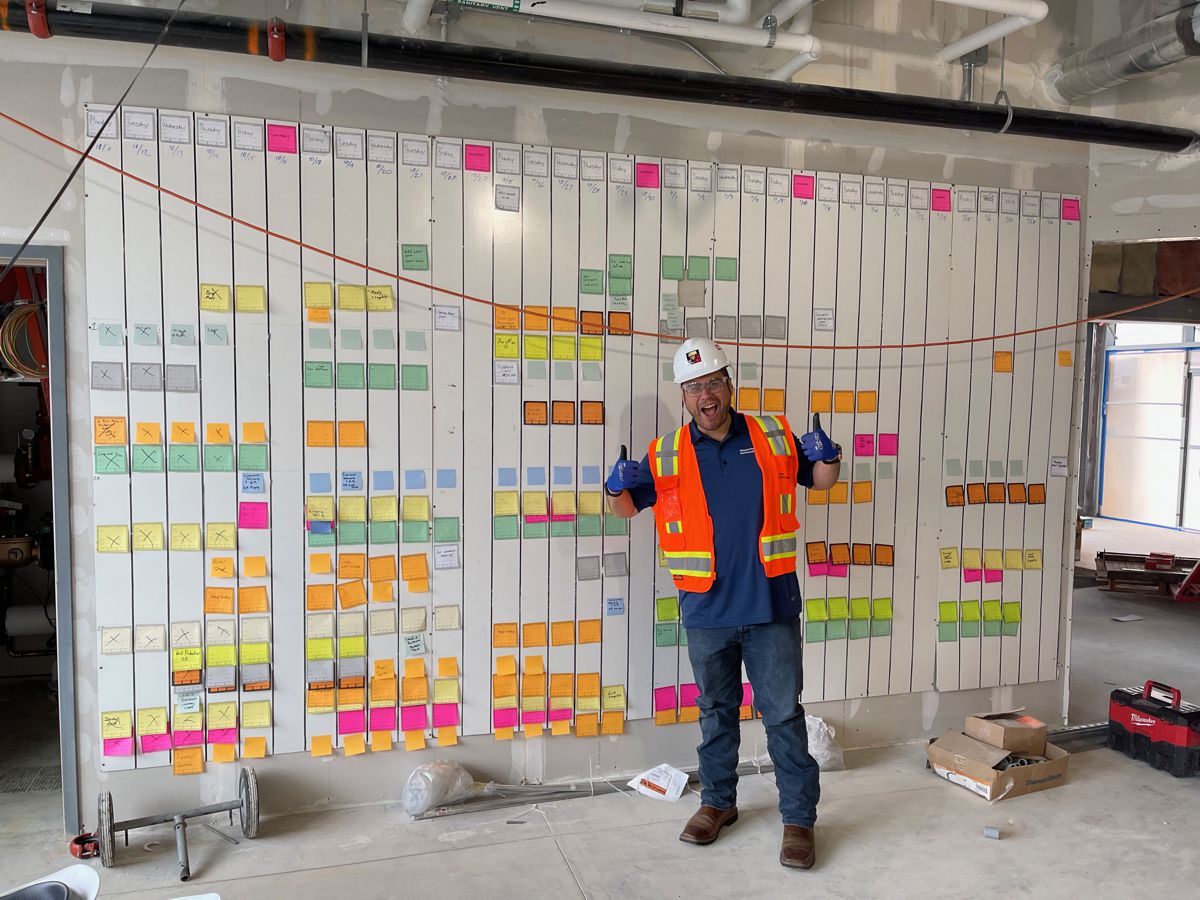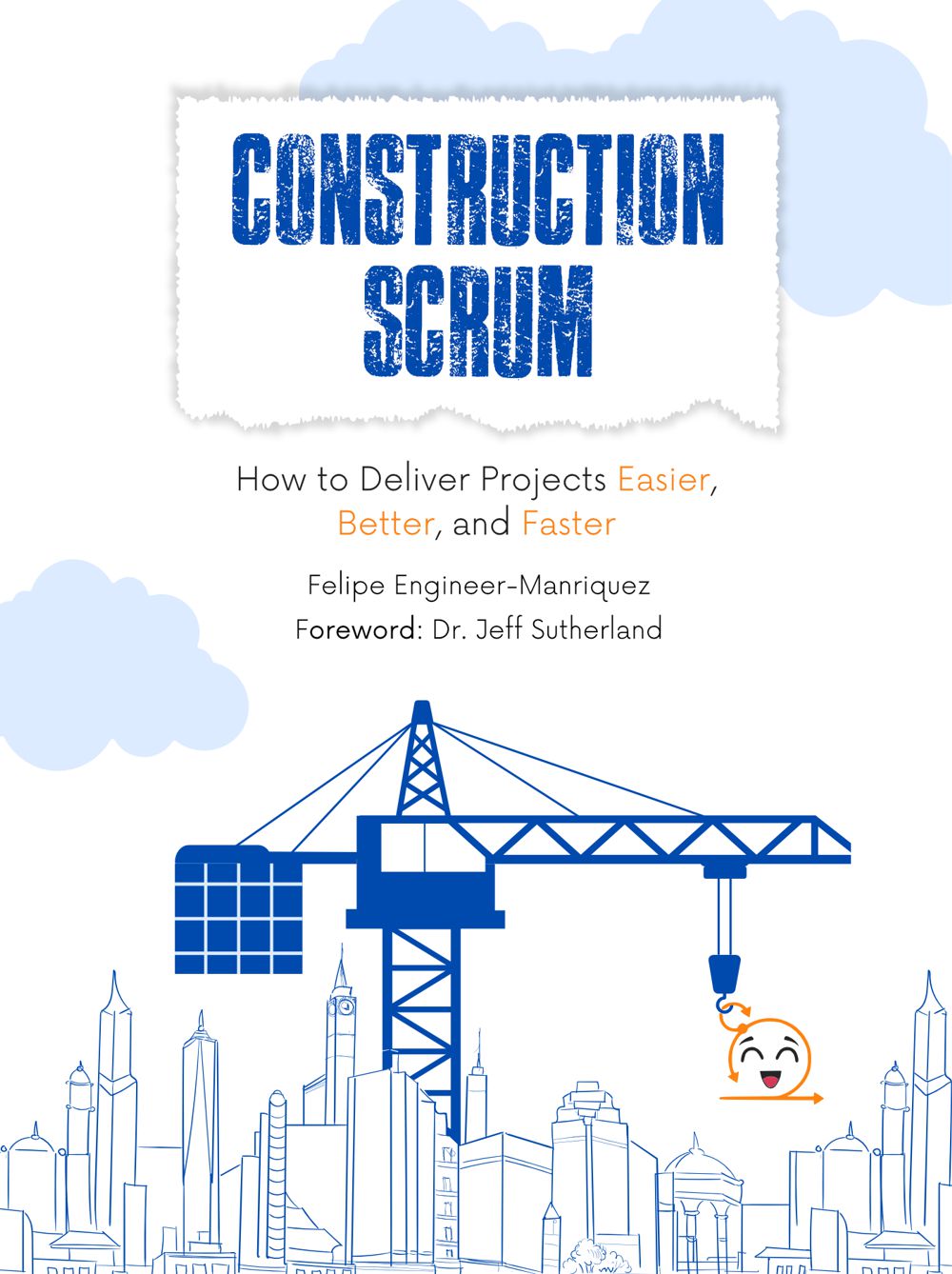Construction Scrum looks at delivering projects easier, better and faster
Construction Scrum: How to Deliver Projects Easier, Better, and Faster is the first practical guide for construction professionals to implement the Scrum framework in the construction industry.
The book is organized in three parts: Part one is a series of short stories that illustrate how Scrum works in design and construction. Part two is Felipe’s Scrum story including the Scrum values and pillars. Part three is an invitation for construction professionals to create their own Scrum playbook with the author’s insights and commentary.
“My vision for this book is to bust the myths and assumptions around Scrum and to simplify the life of construction project managers, superintendents, and field engineers. This book is dedicated to all the people in our industry who take action and make project delivery easier and better for construction today,” Felipe Engineer-Manriquez said.
“With Felipe’s partnership in Scrum Inc, a new Scrum team focusing on Scrum in construction was formed to serve the millions of men and women working to build our world. His generous contributions to this team and the growing community of Scrum practitioners continue to have an outstanding impact on transforming people’s work and lives,” Jeff Sutherland, co-creator of Scrum and CEO of Scrum Inc., said.

5 Ways to Start Using Scrum Today
1. Choose to practice patience with yourself during this experiment and do one thing at a time. Multi-tasking is a myth.
2. Commit to achieving one goal this week. Write it down and put it on the top of the Scrum board to keep it visible daily.
3. List three to five tasks that you think will help you achieve your goal. Write each task on a separate sticky note. A good practice is to keep tasks in time increments that allow you to accomplish them in one workday.
4. Prioritize the tasks in the “To Do” list sorted by priority. The first task is the most important one to get you closer to your goal. Subsequent tags in the stack visually indicate descending priority order. The bottom of the column is for necessary yet less important tasks. Tags closer to the “Doing” column are higher priority. The “Read the Scrum Guide” tag in the Sample Scrum board above would be done last.
5. Move tags from left to right. When you work on the top priority item, place it in the “Doing” column. If you get substantially interrupted or change your mind, move it back to the left. Move the action to “Done” when the work is complete for that tag.

Felipe Engineer-Manriquez commented on why he wrote this book: “There are so many problems in the industry. It’s hard to deliver on time and budget without the heroics of extreme personal sacrifice using traditional project management approaches. I wrote this book to share my experiences, failures, and improved professional growth due to adopting Scrum. I want all designers and builders across the supply chain, no matter what trade they practice, to enjoy easier, better, and faster project delivery. Everyone wins working together.”
Who is this book for: “If you’re a project manager, superintendent, project team member, field leader, architect, engineer, or executive in the construction industry, this book is for YOU. It provides detailed instructions and stories based on real people’s experience implementing Scrum so that projects are easier and faster!” said Felipe Engineer-Manriquez.
Felipe Engineer-Manriquez did extensive research for this work: “The construction industry is complex, and I had to train my entire career to write this book. I worked in traditional project management roles, including office, on-site, and project support roles in design-bid-build hard bid jobs to highly collaborative contract projects. I got my foundation in Lean Manufacturing principles and methods learning from the likes of W. Edwards Deming, Jim Womack, John Shook, and Katie Anderson. I then experimented with Scrum via the application of Scrum: The art of doing twice the work in half the time by Jeff and JJ Sutherland.
“I trained thousands of design and construction professionals before being asked to become a Registered Scrum Trainer™ (RST) building upon my Scrum Master training and practice with projects across the world. These experiences and continued education allowed me to help people overcome challenges with practical Scrum implementation in numerous scenarios.
Is there a message in your book you want readers to grasp?
“I want people to have fun, enjoy what they do, and feel proud of it. With Scrum, anyone can pick up this framework to regain control over their work and grow in ways that may otherwise be difficult or impossible for them. We need your help to improve the construction industry with the Construction Scrum book. The media resources are here to inspire action. Please make space for you to experiment like I did and join our growing community of Agile builders. Our passion and combined efforts will take over any obstacles standing between us and success.”

Felipe Engineer-Manriquez
Felipe Engineer-Manriquez is a Registered Scrum Trainer™ (RST), Registered Scrum Master™ (RSM), Registered Product Owner™ (RPO), and Registered Scrum@Scale Practitioner™ (RS@SP). The Lean Construction Institute awarded him the Chairman’s Award (2019) for contributions to the Institute and the design and construction industry as a whole. As a Registered Scrum Trainer™ (RST) endorsed by Dr. Jeff Sutherland, Felipe also co-created the Design and Construction Registered Scrum Master™ (RSM) curriculum with the Agile Education Program team. It enables RSM graduates to deliver construction project value and earn recognition in the International Registry of Agile Professionals™.
Engineer-Manriquez also leads the Lean Construction program for McCarthy Building Companies, Inc. and is the CEO and Host of The Easier, Better, for Construction (EBFC) podcast.




















